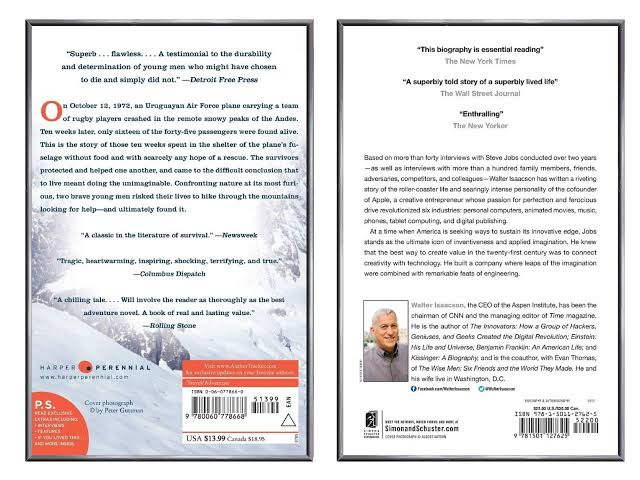Book Essay is a series of narrative/descriptive essays on the parts of a book. From the spine to the back cover, each essay will convey my thoughts (largely subjective) on the components of each part of a book—one essay for a book part. These essays will create the awareness that a book is made of many parts, and show how these parts, put together, make the beauty that a book is. I hope that these musings get us into a conversation in the comments. For me, it is a setup that makes me dig deeper to understand the parts of a book. Therefore, these essays will not be preceded by extensive research on the book part. You can be sure to find errors in factual details. But let me be wrong, this one time, since I would do research afterwards. (But flag down my errors, please!) Worry not, the essays are numbered!
Dear Fellow,
The back cover of a book comes now in this series, as the last essay on a book's physical parts. Although it is the last physical part of any book from the front cover, it is arguably the print book’s first extensive introduction. Standing before a collection of books on a shelf, you first interact with their spines, then the front cover, and the back cover. However, there are exceptions.
The first and most common format of the back cover I know comprises a tagline for the book, praises for the book, a blurb (a brief note of 150 to 300 words about the book), a brief bio of the author, the International Standard Book Number (ISBN) for the book, the book's barcode, and other details like the price tag and publisher’s website URL.
Image source: Brooke Vitale
The second format contains praises for the book, the blurb, the ISBN, and the barcode.
The third format I have seen is a plane surface—no single text. The ISBN is always found on the copyright page (in every format).
Recently, I figured the back cover is a ground for division of labour in the book-making process.
Recently, I figured the back cover is a ground for division of labour in the book-making process. It was during the making of a writing anthology I was involved in. We had sorted everything else but the brief note about the book. Spent from writing the book's introduction and other notes used in the book, the other members of the editorial team dealing in their specialties, and the submission-to-publisher deadline in view, we had to assign the task of writing the description note to someone one the team. Our choice was the guy with a certification in copywriting. And here's why: a book's back cover is its own billboard. A copywriter knows how best to make the most of a billboard—and thankfully, in our case, he is a bookworm.
There are standards for designing book covers—and for every part of a book, as a whole. They vary from publisher to publisher and are based on the uniqueness of the book (in terms of size, message, etc.) and it's message. The finest back covers (or books) at the end of the day are those which were carefully conceived, thoroughly thought through, and excellently executed.
From lovers of aesthetics like myself, many thanks to the intentional graphic designers who make beautiful book covers for us. You should graciously leave remarks for the designers of your outstanding book covers, more so, if you have access to them.
Your LetterMan,
Tongjal, W. N.
Postscript: This is the last essay in the series. I plan to write a conclusion in the next instalment. I hope it makes for yet another enlightening reading experience. Thank you for engaging so far.




